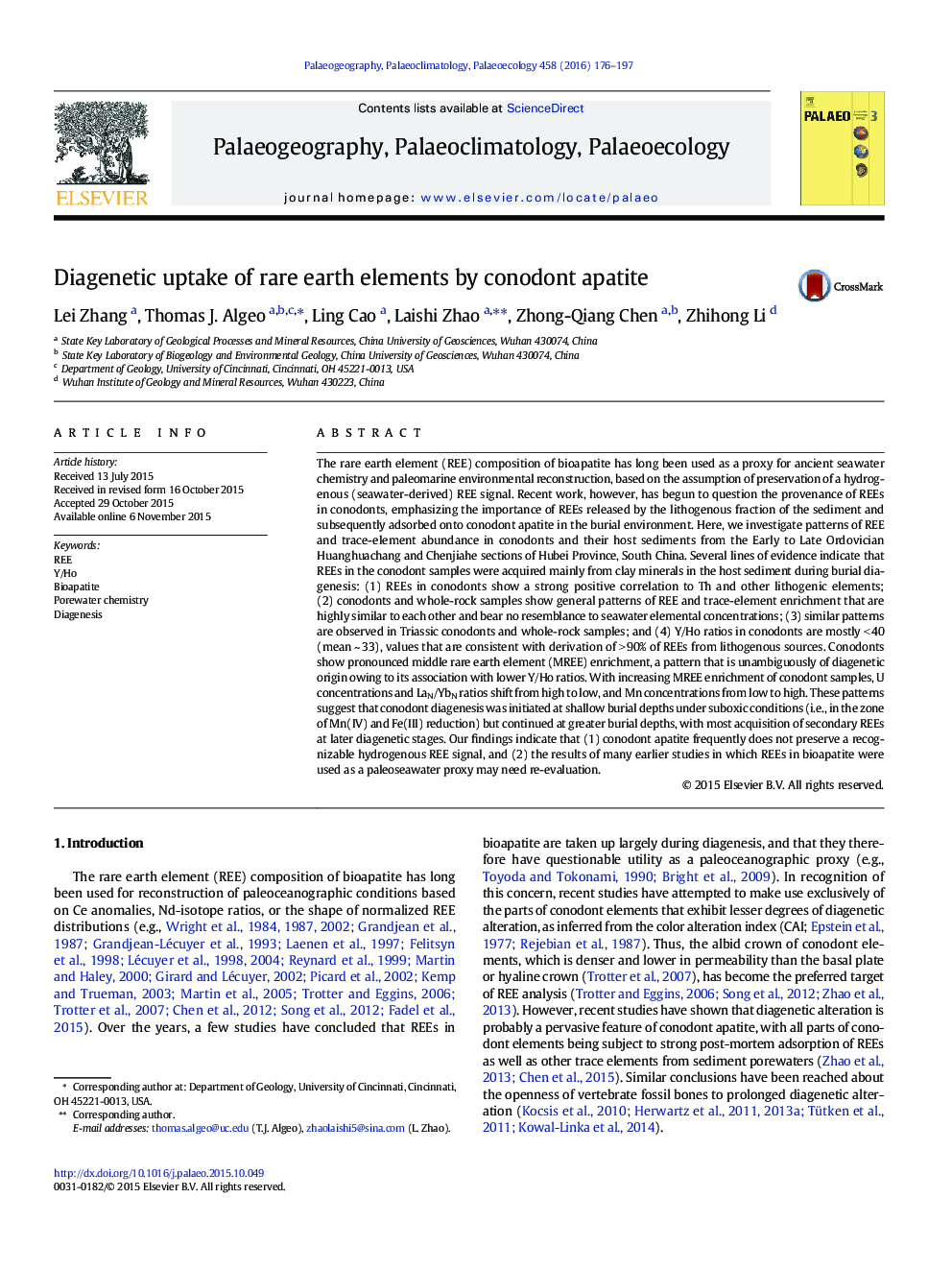| کد مقاله | کد نشریه | سال انتشار | مقاله انگلیسی | نسخه تمام متن |
|---|---|---|---|---|
| 4465588 | 1622133 | 2016 | 22 صفحه PDF | دانلود رایگان |
• Development of tools for determining the sources of rare earth elements (REE) in conodont apatite
• Diagenetic uptake of REEs by conodonts occurs from shallow suboxic zone to deep burial zone
• Most conodonts in Ordovician strata of South China yield strongly lithogenous REE signatures
• Conodont apatite frequently does not preserve a recognizable hydrogenous REE signal
• Our findings suggest that many earlier studies of REEs in bioapatite will require re-evaluation
The rare earth element (REE) composition of bioapatite has long been used as a proxy for ancient seawater chemistry and paleomarine environmental reconstruction, based on the assumption of preservation of a hydrogenous (seawater-derived) REE signal. Recent work, however, has begun to question the provenance of REEs in conodonts, emphasizing the importance of REEs released by the lithogenous fraction of the sediment and subsequently adsorbed onto conodont apatite in the burial environment. Here, we investigate patterns of REE and trace-element abundance in conodonts and their host sediments from the Early to Late Ordovician Huanghuachang and Chenjiahe sections of Hubei Province, South China. Several lines of evidence indicate that REEs in the conodont samples were acquired mainly from clay minerals in the host sediment during burial diagenesis: (1) REEs in conodonts show a strong positive correlation to Th and other lithogenic elements; (2) conodonts and whole-rock samples show general patterns of REE and trace-element enrichment that are highly similar to each other and bear no resemblance to seawater elemental concentrations; (3) similar patterns are observed in Triassic conodonts and whole-rock samples; and (4) Y/Ho ratios in conodonts are mostly < 40 (mean ~ 33), values that are consistent with derivation of > 90% of REEs from lithogenous sources. Conodonts show pronounced middle rare earth element (MREE) enrichment, a pattern that is unambiguously of diagenetic origin owing to its association with lower Y/Ho ratios. With increasing MREE enrichment of conodont samples, U concentrations and LaN/YbN ratios shift from high to low, and Mn concentrations from low to high. These patterns suggest that conodont diagenesis was initiated at shallow burial depths under suboxic conditions (i.e., in the zone of Mn(IV) and Fe(III) reduction) but continued at greater burial depths, with most acquisition of secondary REEs at later diagenetic stages. Our findings indicate that (1) conodont apatite frequently does not preserve a recognizable hydrogenous REE signal, and (2) the results of many earlier studies in which REEs in bioapatite were used as a paleoseawater proxy may need re-evaluation.
Figure optionsDownload high-quality image (211 K)Download as PowerPoint slide
Journal: Palaeogeography, Palaeoclimatology, Palaeoecology - Volume 458, 15 September 2016, Pages 176–197
